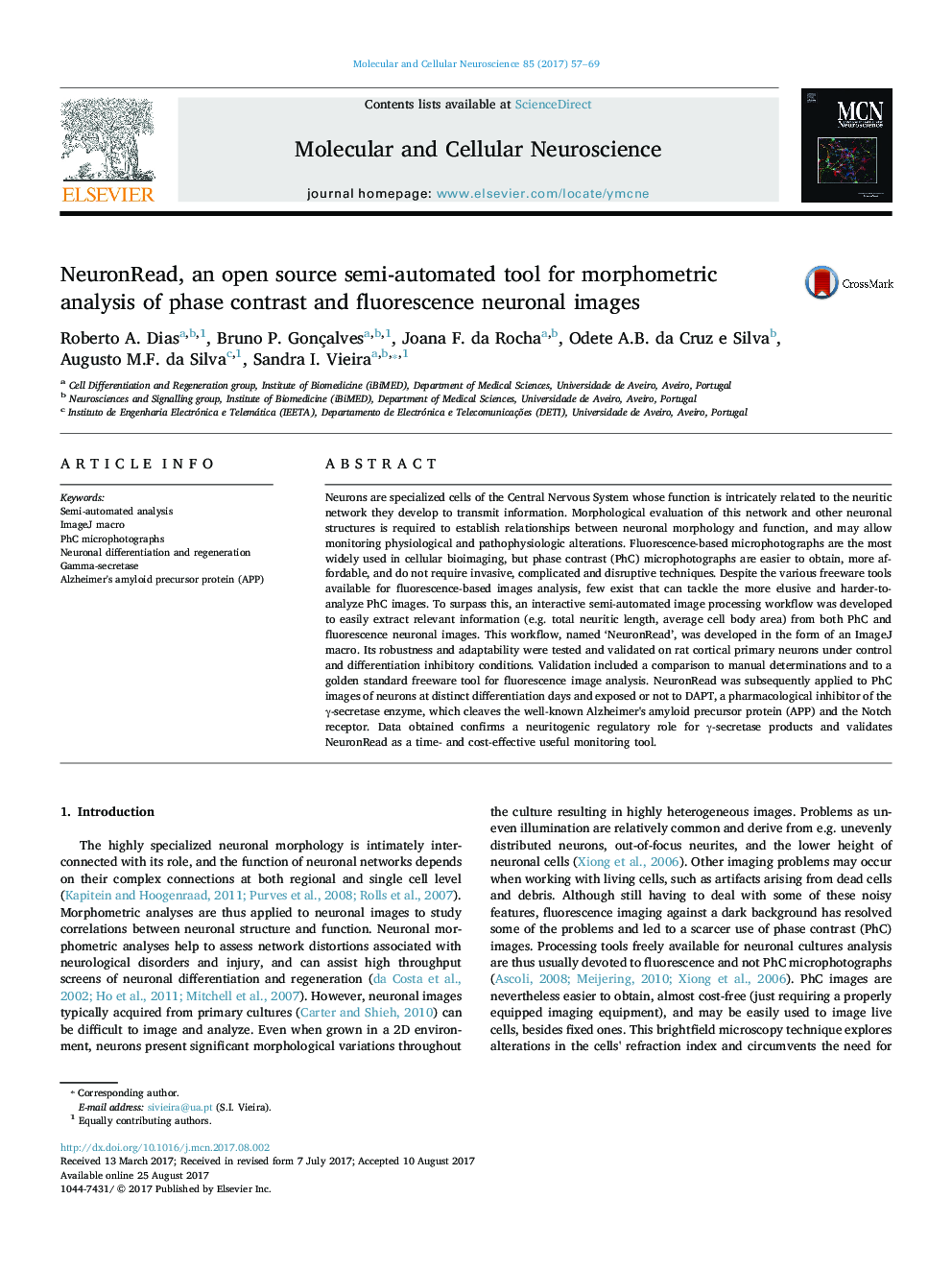| Article ID | Journal | Published Year | Pages | File Type |
|---|---|---|---|---|
| 5534417 | Molecular and Cellular Neuroscience | 2017 | 13 Pages |
â¢Novel semi-automatic easy-to-use macro for morphological analysis of neuronal cells.â¢The NeuronRead macro can analyze both Phase Contrast and Fluorescence 2D images.â¢NeuronRead extracts morphometric data from neuronal differentiation cell models.â¢NeuronRead is able to detect morphological changes induced by drugs such as DAPT.
Neurons are specialized cells of the Central Nervous System whose function is intricately related to the neuritic network they develop to transmit information. Morphological evaluation of this network and other neuronal structures is required to establish relationships between neuronal morphology and function, and may allow monitoring physiological and pathophysiologic alterations. Fluorescence-based microphotographs are the most widely used in cellular bioimaging, but phase contrast (PhC) microphotographs are easier to obtain, more affordable, and do not require invasive, complicated and disruptive techniques. Despite the various freeware tools available for fluorescence-based images analysis, few exist that can tackle the more elusive and harder-to-analyze PhC images. To surpass this, an interactive semi-automated image processing workflow was developed to easily extract relevant information (e.g. total neuritic length, average cell body area) from both PhC and fluorescence neuronal images. This workflow, named 'NeuronRead', was developed in the form of an ImageJ macro. Its robustness and adaptability were tested and validated on rat cortical primary neurons under control and differentiation inhibitory conditions. Validation included a comparison to manual determinations and to a golden standard freeware tool for fluorescence image analysis. NeuronRead was subsequently applied to PhC images of neurons at distinct differentiation days and exposed or not to DAPT, a pharmacological inhibitor of the γ-secretase enzyme, which cleaves the well-known Alzheimer's amyloid precursor protein (APP) and the Notch receptor. Data obtained confirms a neuritogenic regulatory role for γ-secretase products and validates NeuronRead as a time- and cost-effective useful monitoring tool.
